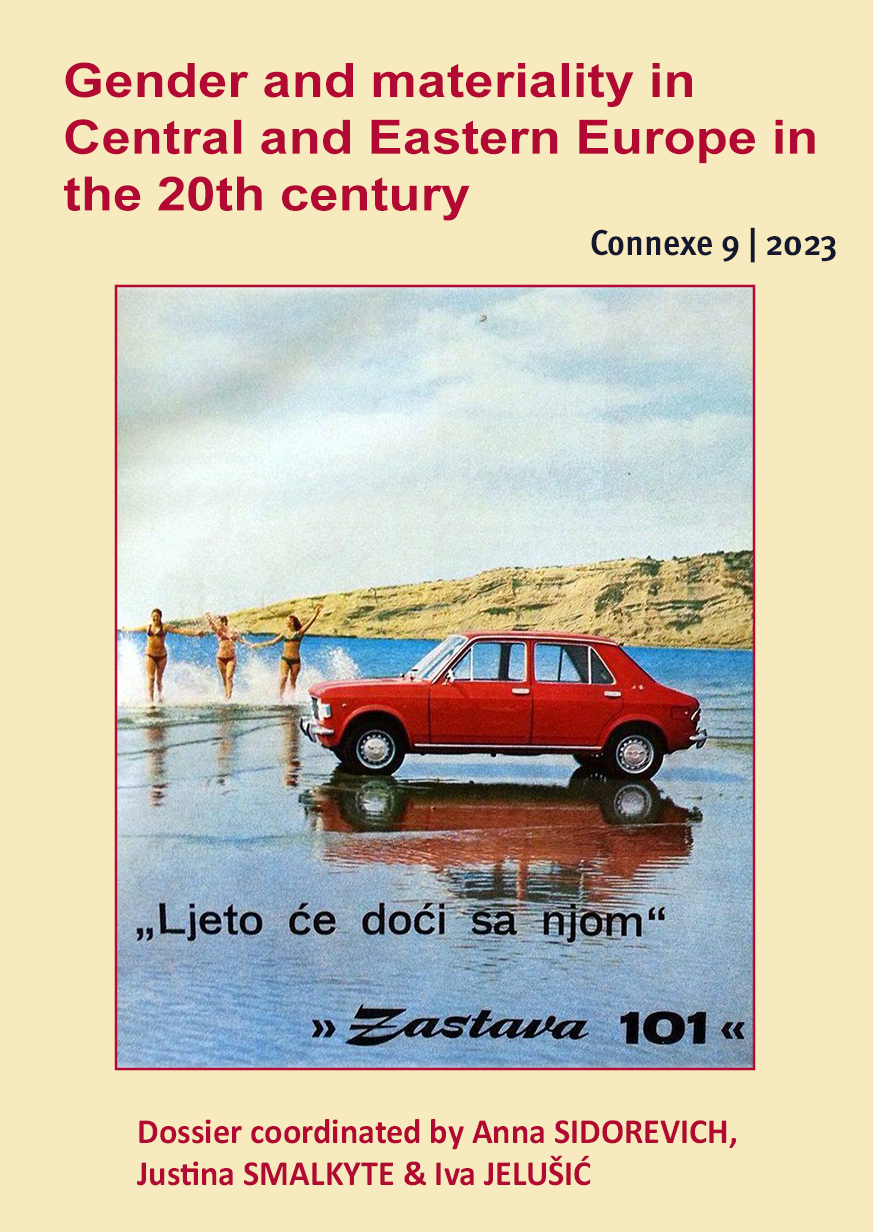Vol. 9 (2023): Gender and materiality in Central and Eastern Europe in the XX century

The aim of this special issue, entitled “Gender and Materiality in Central and Eastern Europe in the XX century”, edited by Iva Jelušić, Justina Smalkyte and Anna Sidorevich, is to contribute to gender research in the Central and Eastern European context from the perspective of material culture studies. Although not all of the contributions use objects as their “primary data”, they all explore the complex interplay between materiality and gender.
This dossier opens with an article written by Ivana Mihaela Žimbrek and Lea Horvat that traces the evolution of Yugoslav kitchen design from the early 1950s to the early 1970s. Anna Sidorevich analyzes the mistreatment of women during childbirth and abortion in the late Soviet Union. Julia Mead delves into a dedicated Czech hobbyist community who are preserving a collection of socialist-era domestic appliances. Marta Chmielewska explores Poland’s transition from socialism to capitalism by examining shifts in the production and advertising of underwear. Martyna Miernecka investigates the interplay between socialist institutions promoting creative work and the history of typewriters in Central and Eastern Europe.
The dossier is enriched by an article by Kristen Ghodsee, published in the “Open Fora” section, entitled “Revenge of the Tampon: Gender and Materialisms (New and Old) in 20th Century Central and Eastern Europe”.
Finally, the “Stop on Archives” section contains two texts: An interview with researchers involved in the research project “Cartography of Resistance”. This project examines the underground networks established to resist the fascist Ustasha [Ustaša] authorities during the Second World War on the territory of the Yugoslav countries (1941-1945), which had their roots in the leftist labor movement of the interwar period and the activism of the Communist Party of Yugoslavia. In the second text, Iva Jelušić shares some of her findings on songbooks and the importance of singing for members of the partisan anti-fascist resistance on the territory of Yugoslavia during the Second World War.
By looking at different kinds of objects, the authors make new contributions to the history of everyday life and gender relations under state socialism and communism.
This volume has been enriched by a text outside the main issue. In the “Open Fora” section, Éric Aunoble gives us his observations on the preservation of sources in Ukraine which include the results of a field survey (« Les sources de l’historien·ne au péril de la guerre »).
Finally, four book reviews conclude this Volume 9 of Connexe.



